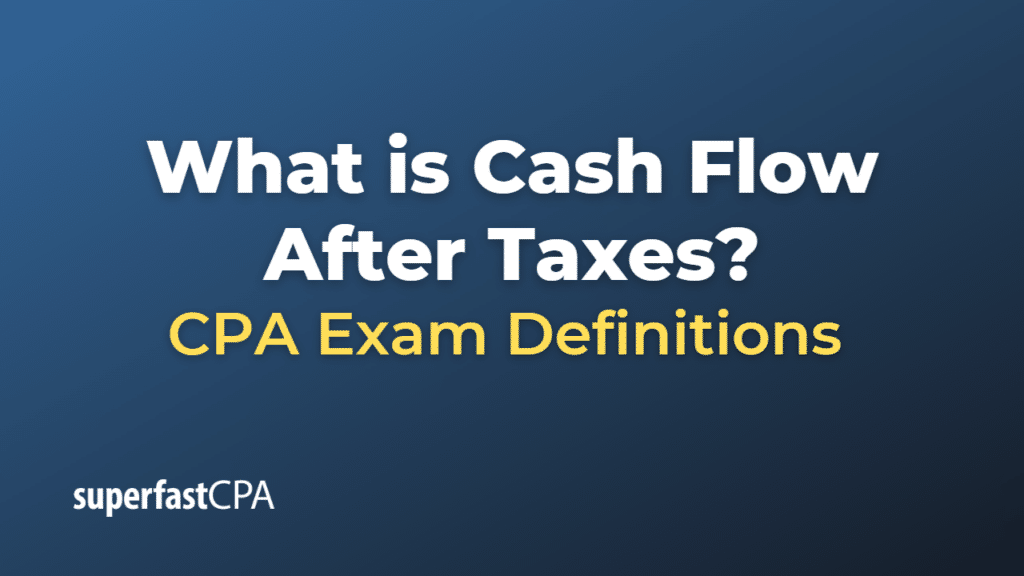Cash Flow After Taxes
Cash flow after taxes (CFAT) is a measure of a company’s cash inflows and outflows, adjusted for the impact of taxes. It represents the amount of cash a business generates after accounting for tax payments, which gives a clearer picture of its financial health and true cash-generating capabilities. CFAT is particularly useful for investors and financial analysts when comparing the performance of different companies or projects with varying tax rates and structures.
To calculate cash flow after taxes, you first need to determine the cash flow before taxes, which is typically derived from a company’s operating cash flow, as shown on the cash flow statement. Next, you subtract the taxes paid by the company during the period.
Here’s the formula for CFAT:
Cash Flow After Taxes (CFAT) = Operating Cash Flow – Taxes Paid
By analyzing the cash flow after taxes, stakeholders can better understand the company’s ability to meet financial obligations, fund growth initiatives, and return value to shareholders after accounting for tax expenses.
Example of Cash Flow After Taxes
Let’s consider a hypothetical example of a company, “TechGuru Inc.” We’ll examine its cash flow after taxes for a particular year.
TechGuru Inc.’s cash flow statement has the following information:
Operating Cash Flow:
- Cash received from customers: $800,000
- Cash paid to suppliers: -$500,000
- Cash paid for salaries: -$200,000
- Interest paid: -$15,000
- Taxes paid: -$65,000
First, we calculate the operating cash flow:
Operating Cash Flow = $800,000 – $500,000 – $200,000 – $15,000 = $85,000
Now, we can calculate the cash flow after taxes:
Cash Flow After Taxes (CFAT) = Operating Cash Flow – Taxes Paid
CFAT = $85,000 – $65,000 = $20,000
In this example, TechGuru Inc.’s cash flow after taxes is $20,000 for the year. This means that after accounting for tax payments, the company generated a net cash inflow of $20,000. By analyzing the cash flow after taxes, stakeholders can better understand the company’s financial health, ability to meet financial obligations, and potential to fund growth initiatives and return value to shareholders, taking into account the impact of taxes.












